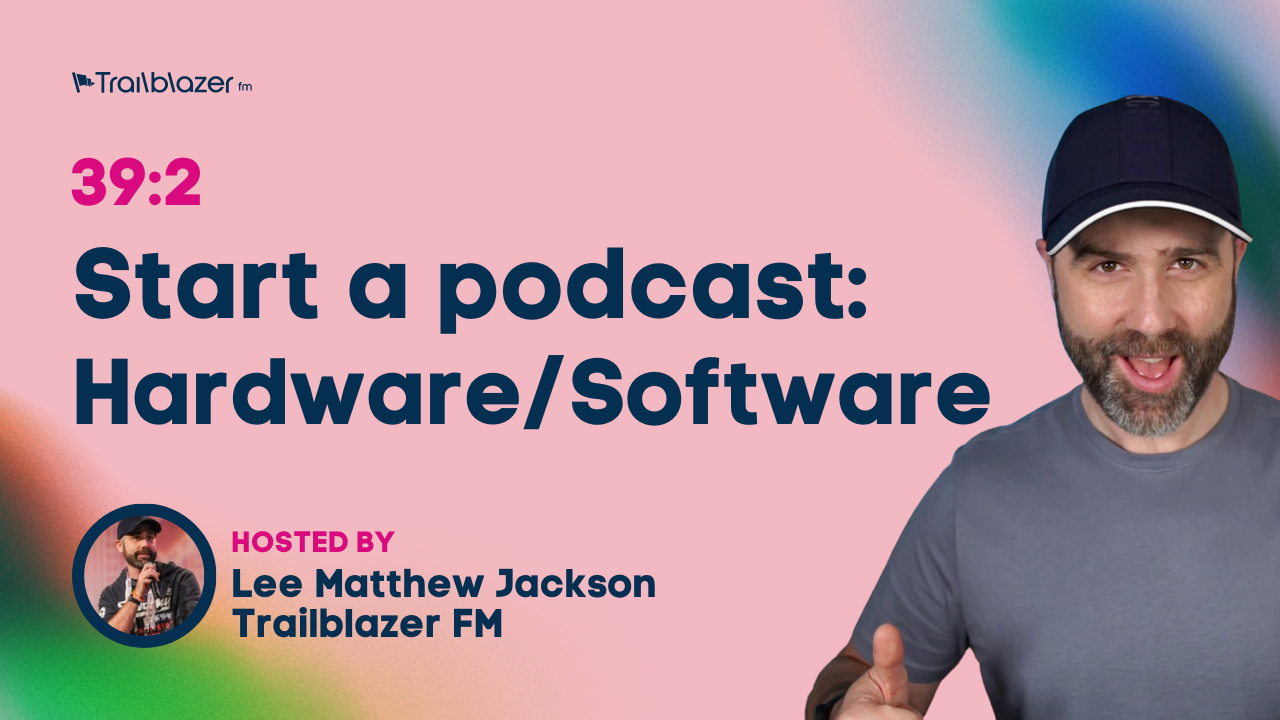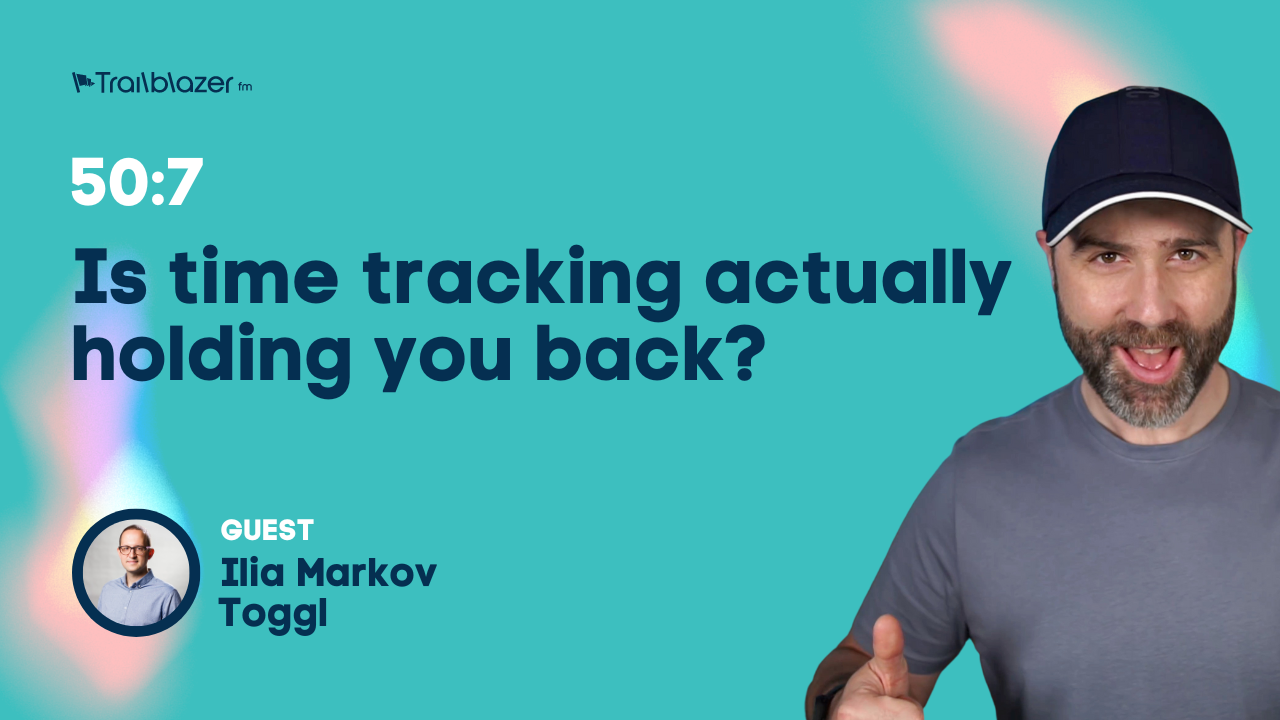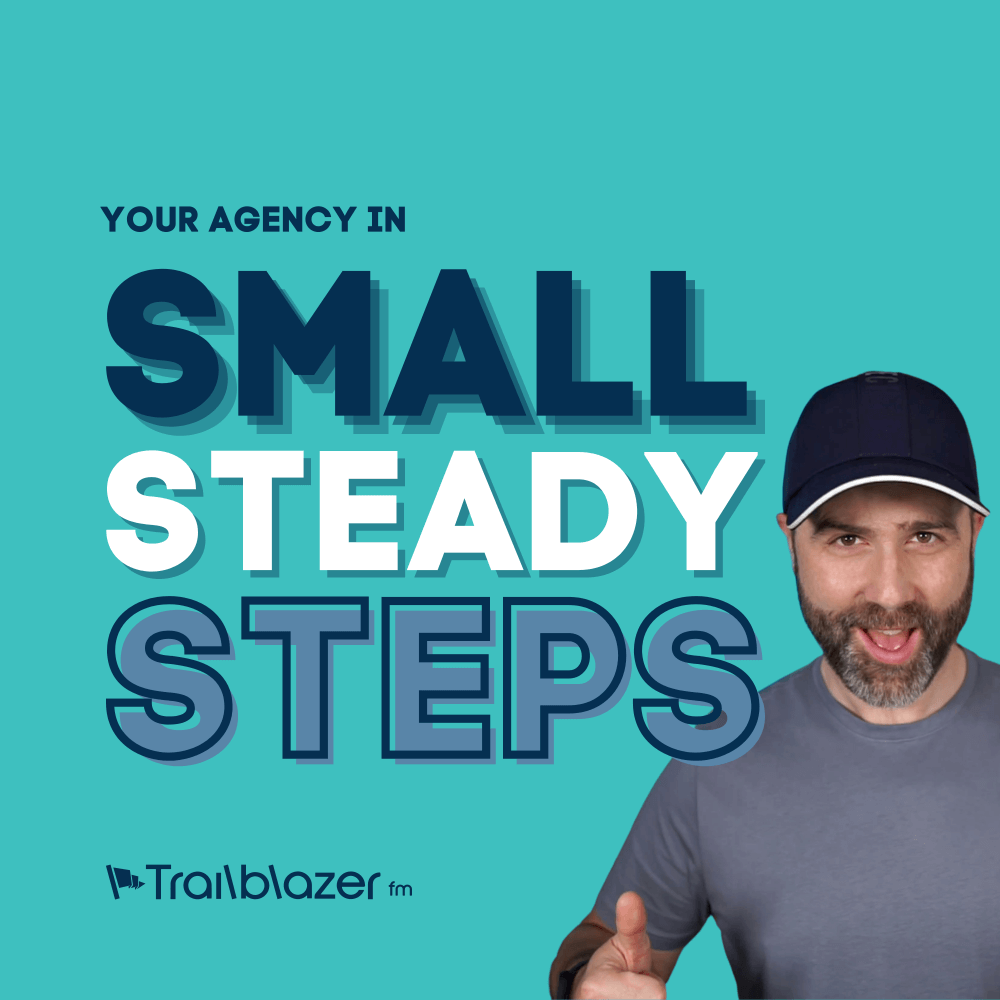
39:2 How to start a podcast – Hardware / Software
This week we will look at the hardware and software you can use to *record your show. Our approach is as a minimum viable product ensuring a good quality recording utlisings low or no cost solutions in order to validate your podcast over the next few months.
This week we will look at the hardware and software you can use to *record your show. Our approach is as a minimum viable product ensuring a good quality recording utlisings low or no cost solutions in order to validate your podcast over the next few months.

Check out the other podcasts in the series here.
* We assume a guest format today, but we will deep dive into solo recording next week as we look at the editing experience.
Resources mentioned
- Hardware
- ATR2100 USB
- Blue Yeti
- Foam cover (check your mic)
- Software
- Scheduling
- Book like a boss
- Podcaster Plus
- Calendly
- Recording
- Ringr
- Cast
- Zencastr
- Zoom
- Skype
- Audacity (Solo and we discuss next week).
Transcript
Welcome to the Agency Trailblazer podcast. This is your host, Lee and on today’s show, we are going to continue with our series learning how to launch your own podcast. Before we continue with the show, let’s give a big shout out to Cloud Ways, the sponsor of this episode. They provide managed cloud hosting. We trust them with the trailblazer.fm website and with our most important client projects. You can check them out over on trailblazer.fm/cloudways.
Now last week in episode 310, we took a look at naming your show, selecting from show formats and setting a show schedule. Try saying that three times fast. And this week, we’re going to take a look at both the hardware and the software. Now this series is to enable you to get an MVP podcast off the ground. That’s a minimum viable product. And again, like last week, I’ll caveat all of this with, I assume you have already decided why you are running a podcast, and you’ve also decided who it is for. That is really important before you go down this rabbit hole. Today we’ll look at the hardware and the software as an MVP. Again, minimum viable product, where you are spending as little as possible and still launching a good quality show.
Let’s start with the hardware, and let’s do the too long didn’t read, TLDR. You don’t need to spend a fortune on hardware. The basics will do to get you started, and you can invest more later. So either use your smartphone or grab yourself a microphone such as the ATR2100 USB mic. Let’s unpack a little further. Now, I am not a skilled audio magician, but I can tell you what has worked and what has not worked in my show over the last six years. So let’s look at what didn’t work and why. I want to start with this, because people often make the mistake of buying the super expensive microphones without realising what else might be involved. Now, I went ahead and I purchased a blue Yeti microphone, and the microphone is amazing, but it’s actually too good. Now, what do I mean? It is so sensitive that it picks up everything. So that’s electrical hums, the neighbour farting, and so much more.
Now I spent 50 episodes of this show sweating it out underneath a duvet so that I could reduce the echo and reverberation, and reduce that background noise. I even purchased pop filters. I got foam for the walls, boom stands, USB extensions. You name it, I bought it to try and fix the problem. Frankly, I had a microphone that was too sensitive, and a room that was not suited to it. I spent in all approximately two to 300 pounds on stuff, just to try and get a decent sound. And like I said, I ended up spending an awful lot of time underneath that duvet, in the height of summer, sweating.
So what did work? Long story short, I spent $80 on a USB ATR2100 microphone and I have frankly never looked back. I am still using it to this day. I use it with a foam cover and I’ve taken it all around the world. In hotel rooms, in the middle of Disney World, I’ve used it. And pretty much any way you can imagine, I’ve probably used this microphone, even at WordCamp London. It’s essentially a courtyard microphone that plugs into the USB port of your Mac or your PC, and it rocks. The sound is awesome, and it doesn’t pick up that much background noise. Now it is not perfect, but it will certainly do. And remember, that great is certainly better than perfect and never doing it. You know, perfect costs a lot of money to achieve. And when you’re launching a podcast, you really want to validate that there is an audience over the first few months/year, before you start investing the big bucks. So the ATR2100, you can find a link to in the show notes, along with the exact foam mic cover that I use.
Now then, what if you already have a Blue Yeti or another microphone? Well, don’t panic. Here are some top tips to improve your sound. And the following advice will help you primarily with the Blue Yeti. And if your microphone has any of these specific settings. So number one, turn the gain down to about half way, switch the mode to cardioid. This means you’re going to be talking directly into the microphone. Put on a foam cover if you can, that’s going to help reduce the pop. It’s not going to get rid of it. You’ll know that I’ve got plenty of pops on my podcast, and thank you for putting up with it. Also speaking to the front of the microphone, or as closely as possible. I’ve found that anything from three to six inches works really, really well. And then, with regards to the room, this is number five now, ensure the room you’re in has plenty of furniture, carpet, cushions, et cetera, to help soak up the sound. And number six, if you don’t have that, then grab yourself some blankets and just piled them around the room, because that really does help soak up the sound. So whatever microphone you have, you might be able to get a decent quality sound with what you already have. Therefore you don’t have to spend all that extra cash.
Now let’s take a look at the software. Let’s do our TLDR, and for the sake of getting launched, you need essentially three tools, maybe even two. First of all, a booking system if you have guests. If not, you just need two things. The other two items are a way to record your podcast and then some audio editing software. Let’s take a look at scheduling. Now, if you are interviewing people, then you’re going to find it really useful to connect your calendar to some form of online scheduling tool, such as Book Like A Boss, Podcaster Plus, and many more. Check the show notes for more information. Now, these booking services connect with your calendar, and then present available times to your guests in their relevant time zone. You can then set when you are available, put your holidays down, how much buffering you want in between bookings, any custom fields of information that you want to capture from your guests, and much more.
You can also present potential guests with a booking link rather than engaging in a long calendar comparison email thread, that so often leads to a time zone miscommunication. Nothing examples that more than the recent clash with two webinars I was meant to be presenting on at the same time, and the clocks in the UK went forward, but they didn’t in the USA. That was awkward. So I’ve used Book Like A Boss, for example, for hundreds of episodes and meetings. I’ve really enjoyed it. And you can also find a link in the show notes to when I interviewed their founder many moons ago. Other services can include Calendly, Acuity Scheduling. And again, so much more. Check out the show notes.
Now recording. This is one of the most important aspects of your show. Sound quality needs to be half decent if someone’s going to invest time in listening to your episode. There is nothing worse than choppy audio. And there are a couple of different options here. First one is recording from your machine. And then the second one is recording through an online service. Let’s talk on both. First off, recording on your machine. With this method, you’re going to hit record on your machine to capture the audio. And although this is a very effective way and a method that I did use for at least the first 80 episodes of the show, you do run the risk of internet bandwidth reducing the quality of your guest’s audio, if you have a guest. Now we would, at times, get interference or choppiness, and we would either leave it as it was, or I’d ask the guest to repeat what they’d said. I would tend to leave it because it was maybe not terrible, but I wasn’t happy with it, and asking the guests to repeat things would sometimes break up the natural flow of the recording, and also meant that we had a lot more editing to do.
Now, if you’re going to do this, the two most effective ways of recording on your machine, in our experience, has certainly been either Zoom or Skype. And there are a lot of other tools out there. I’ve just kind of stuck with what I know. Zoom has recording built in, but be sure to select record a separate audio file for each participant who speaks. That is literally what it’s termed as, I think, in the settings, or at least it was last time I checked in the setting check section. And this is going to allow you to record each guest and yourself separately, making editing and levelling a lot easier rather than just one track with you merged together. I believe Skype does now offer call recording. However, if you need a little more control, you can check out Ecamm Call Recorder for the Mac, or Pamela for windows.
Now let’s talk about recording through an online service. An online service will record the audio locally at your end and at the guest’s end, and then combine them. This means your audio is recorded from the machine and uploaded as you go, which is phenomenal. It gets rid of the internet latency issue. The finished product is two locally recorded tracks, that have not been affected by all of that interference. And even if you heard it during that conversation, remember, as it’s being recorded locally at source, that interference will not be recorded. This is my preferred method of recording a podcast, as depending on the service you’re using, you can also have your guests use their smartphone, which actually increases the quality of the audio, because most smartphones are equipped with incredible microphones for conversation and recording. Therefore, we use the Ringr app, that’s R-I-N-G-R app in those circumstances. Check again the show notes for a link. And this also works in browsers and on smartphones, giving us the flexibility to use our own hardware, as well as give our guests the choice of how they join us for that audio experience. Now other services that we’ve used, but they don’t provide apps for, are Zencaster, and also Cast. Again, check out the show notes.
Next week, we’re going to be taking a look at editing your show, and we’ll talk about free and open sourced software you can use, and also alternative ways of mixing your podcast audio together, to get a great sounding show and experience for your listeners. So please be sure to subscribe to this podcast so you do not miss out. These notes are being compiled by my team, so that you can download these as a workbook with links. And that will be made available to you very soon. You’ll be aware, we’re a little short staffed with some of the team being on maternity leave, et cetera. So a few of our workbooks are a few days delayed per episode. Please forgive us. I ain’t perfect. I am getting there. We love you all very much. But that’ll be available within a few short days, you’ll be able to download those workbooks. But links to everything that I’ve mentioned today are available right now in the show notes over on trailblazer.fm.
Whilst you are there, please join us in the comments, let us know what you have found useful about this episode. If you are launching a podcast as a result of this mini series, then please let us know the link to your new show, or just the Genesis of your idea, so that we can hold each other accountable and we can follow your progress. Again, over at trailblazer.fm, episode number 311 in the comments section. That’s going to be the best place for us to have a conversation. A quick reminder, if you missed getting started, episode number 310 will get you started. Then you can follow up with this week’s episode, and next week we’ll be looking at podcast editing. So folks, if we don’t see you in the comments over an trailblazer.fm, then how about we see you in next week’s episode?








